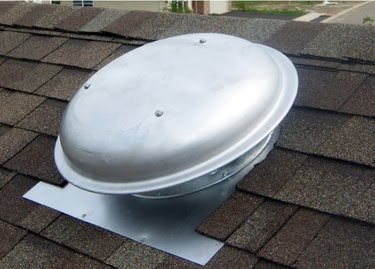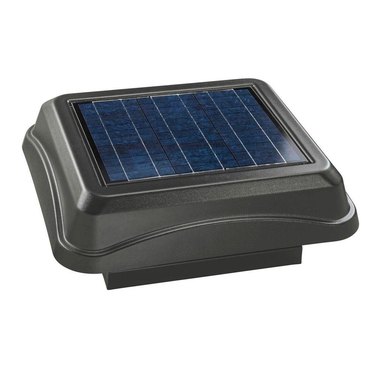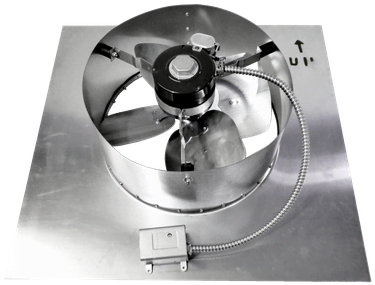Quck answer
Installing an attic fan is a straightforward process that can help to improve ventilation and reduce heat buildup in your attic. Here are the basic steps to install an attic fan:
1. Gather the necessary tools and materials, including the fan unit, mounting brackets, electrical wiring, and a circuit tester.
2. Choose the location for the fan on the roof or gable wall, ensuring it is near an electrical source.
3. Install the mounting brackets according to the manufacturer’s instructions, ensuring they are secure.
4. Connect the wiring from the fan to the electrical source, following proper safety procedures and using a circuit tester to ensure the power is off.
5. Secure the fan unit onto the mounting brackets, making sure it is level and properly aligned.
6. Test the fan to ensure it is functioning correctly, and make any necessary adjustments.
By following these steps, you can successfully install an attic fan and enjoy improved ventilation and energy efficiency in your home.
An attic fan, also known as a powered attic ventilator, is designed to expel hot air from the attic and bring in fresh outdoor air. Its main purpose is to provide ventilation for the attic only, unlike a whole-house fan which cools down the entire house at night. Attic fans come in various styles and can be installed either on the roof or in a gable wall. Standard fans are connected to the household electrical circuit, while solar fans operate solely on solar power. Depending on the size of the attic and the fan design, one or multiple fans may be required to ensure proper ventilation.

Roof-mounted attic fan.
Image Credit:
Jet Fan USA
Reasons to Install an Attic Fan
An attic fan enhances the natural ventilation system of the attic by increasing the rate of air exchange. Its primary benefit is reducing the temperature in the attic during hot weather. Additionally, attic fans can help reduce moisture and prevent ice dams in the winter.
However, it’s important to be aware that manufacturers often exaggerate the benefits of attic fans, so it’s crucial to take their claims with a grain of salt. Furthermore, for an attic fan to work effectively, the ceiling below the attic must be properly sealed. Air leaks in this area can result in higher heating or cooling bills as conditioned indoor air escapes into the attic when the fan is in operation.
Equally important is the need for adequate intake ventilation in the attic. Attic fans expel hot air from the peak of the roof while drawing in outdoor air through vents in the eaves. The number of vents and their total free ventilation area must meet the fan’s minimum requirement for optimal performance.

Soffit vents under the roof eave are ideal for providing attic intake air.
Image Credit:
Rollex
Wiring an Attic Fan
Standard attic fans, which are not solar-powered, are typically connected to a 120-volt household circuit that can handle either 15 or 20 amps. If there is enough capacity on an existing circuit in the attic, the fan can be connected to it without overloading the circuit. In cases where there is no suitable circuit, a new one must be installed from the home’s service panel. This new circuit can also be used to power additional lights or electrical devices in the attic.
Most fans come with an internal thermostat that automatically turns the fan on and off based on the attic temperature. While it is possible to connect the fan directly to an electrical circuit without a switch, it is recommended to install a standard single-pole switch for manual control. Some fan circuits may also include a humidistat, which functions like a thermostat for humidity levels instead of temperature. In such cases, the circuit will have a separate humidistat unit and an additional switch that can override the humidistat.

Installing a gable fan is easy if you already have a suitable gable vent.
Image Credit:
Mid America Components
Caution
If you are not experienced in working with electrical circuits, it may be best to hire a professional electrician to run the cables and make circuit breaker connections for an attic fan. Evaluate your own skill level before attempting this type of electrical work.
Items You Will Need
-
Attic fan kit
-
Drill and drill bits
-
Utility knife
-
Jigsaw or reciprocating saw
-
Pry bar
-
Roof sealant and caulk gun
-
Electrical box, NM cable, and new circuit breaker (if necessary)
Installation of a Roof-Mounted Attic Fan
A roof-mounted fan is installed over a hole in the roof decking and has a large, flat base of flashing that slips under the roof shingles. The shingles and flashing are then sealed for a weather-tight installation:
- Begin in the attic and select a fan location near the roof peak and the center of the attic space. If the fan is on the back side of the roof, it will not be visible from the street.
- On the underside of the roof sheathing, make a mark that is centered between two roof rafters (or trusses) to indicate the center of the fan.
- Drill a hole at the mark, going through the sheathing and all the way through the roof shingles.
- Go to the roof’s top and use the template provided with the fan to draw a cutting line for the hole, centering the template on the drilled hole.
- Using a utility knife, cut away the shingles along the outline.
- Using the template, mark an inner hole on the roof decking, then cut out the decking with a jigsaw.
- In the square area around the hole where the fan’s flashing will slide in, remove all nails from the shingles.
- Slide the fan flashing under the upper portion of the shingles on the hole and secure it with roofing nails. The lower half (or so) of the flashing rests on top of the lower shingles. Seal the shingles and flashing with roofing sealant.
- In a convenient location in the attic or in the living space below, install an electrical box. Run circuit cable to the box and install an approved switch for manual fan control.
- Run more circuit cable to the fan and make the final wiring connections following the manufacturer’s diagram.
- Set the temperature setting on the fan’s thermostat and test the fan and switch for proper operation.

Solar attic fans with flat solar panels have a streamlined profile.
Image Credit:
Broan/Home Depot
Installation of a Solar Attic Fan
Solar attic fans are installed in the same way as standard roof-mounted attic fans (see above), but without all the wiring steps. When choosing a location for a solar fan, select a spot that receives full sun during the afternoon in the hottest time of the year (for example, at 4 p.m. in July). This is when the fan will be operating most frequently. Make sure to cover the solar panel on the fan with cardboard during installation to prevent the fan from running before it is fully installed.

Some gable fans have a built-in cover that hides the parts of the vent opening that are visible.
Image Credit:
Jet Fan USA
How to Install a Gable-Mounted Attic Fan
Gable fans are designed to be mounted directly behind louvered attic vents in gable walls. If you don’t have a suitable existing gable vent, you can install a new one, but it might be better to install a fan on the roof instead. Roof fans are more effective than gable fans.
Gable fans work best when they are mounted on a piece of plywood with a hole that matches the fan housing. The rest of the plywood covers any visible parts of the gable vent to maximize efficiency (some fans have a built-in plate or panel that serves the same purpose as plywood):
- Cut and install a 2 x 4 cross brace at the top and bottom of the vent opening to create a square or rectangular frame around the opening. Most vents are installed between two vertical wall studs, and the cross braces can simply be screwed into the studs.
- Cut a piece of plywood that matches the outer dimensions of the frame around the opening. Place the fan housing upside down in the center of the plywood and trace around it. Cut along the outline.
- Mount the fan on the plywood using the provided mounting brackets and screws.
- Mount the plywood (with the fan attached) to the frame around the gable vent using wood screws. The fan should face outward towards the vent.
- Install an electrical box in a convenient location in the attic or in the living space below. Run circuit cable to the box and install an approved switch for manually controlling the fan.
- Run additional circuit cable to the fan and make the final wiring connections, following the manufacturer’s diagram.
- Set the temperature setting on the fan’s thermostat and test the fan and switch to ensure they are working properly.


